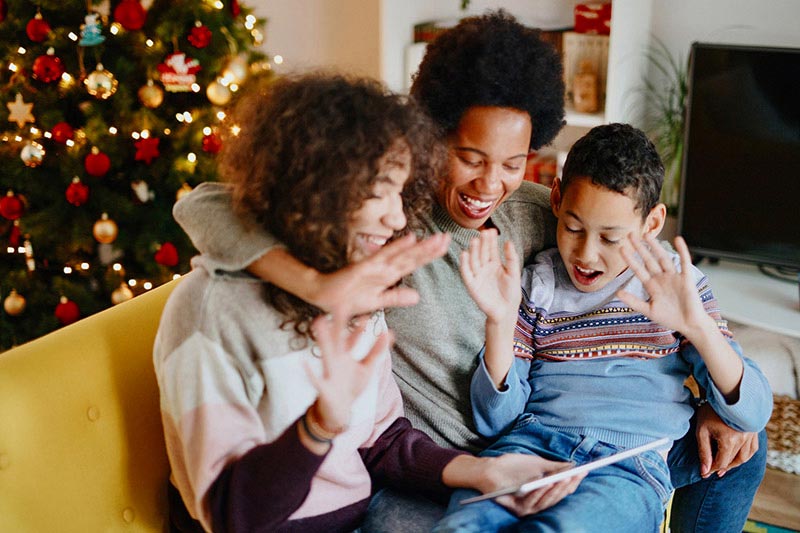‘Tis the season for new holiday traditions, COVID safety measures

In ordinary times, the most vexing holiday-related question might involve who’s making which pie. Thanks to COVID-19, things are a bit more complicated this year. With infections increasing, what’s the best way to safely celebrate with loved ones?
“The benefits of being together can’t be overstated, but there’s no zero-risk scenario, other than not getting together in person,” said Dr. Mai Tuyet Pho, an assistant professor of infectious diseases and global health at the University of Chicago Medical Center.
By their very nature, Pho said, holiday celebrations are high-risk activities — forcing people to gather in poorly-ventilated indoor environments, perhaps with guests from other parts of the country. Plus, such scenarios often include seniors and others with pre-existing conditions that put them at higher risk for severe illness.
But that doesn’t mean people can’t find ways to celebrate the holidays. “I take a harm reduction approach and try to lay out all the risks and benefits,” Pho said. “You can always do something more safely. It doesn’t have to be all or nothing.”
What if everybody tests negative?
While safer than the alternative, testing guests for COVID doesn’t guarantee a risk-free environment, Pho said, noting tests are less accurate in people with no symptoms. “If you’re able to quarantine and get tested before gathering, that’s a pretty good way to mitigate risk, but what if you have to get on a plane or a bus?” she asked.
How risky is travel?
Avoiding travel altogether is the safest bet this year, said Dr. Bill Miller, the senior associate dean of research at the Ohio State University College of Public Health. While Miller acknowledged that airplanes have excellent filtration systems, he urged people to think about the bigger picture. “With plane travel, you’re also in the terminal and in the car to and from the airport,” he said. “It’s not without risk.”
Cars are a better option for long-distance trips, but Miller suggested bringing your own food and avoiding unnecessary stops.
Celebrating Safely
Families set on celebrating in person should consider time, space, people and place, said Miller. “And don’t forget your face,” he added, referring to the importance of face masks in preventing the transmission of COVID-19.
The Centers for Disease Control and Prevention in Atlanta recommends people wear masks in any public setting and when congregating with others.
Time
The longer one spends in the same room as somebody who is contagious, the greater the risk of catching the coronavirus.
Space
If gathering in person, there should be enough space for people to stay at least six feet apart.
People
More guests are riskier than fewer, Miller said. The CDC doesn’t offer specific recommendations about the number of people in attendance, but it suggests limiting contact between attendees and following local governmental laws, rules and regulations.
It’s also important to know and trust the people in attendance, Miller said. “This is the whole notion of pods,” he explained, “If you decide to join a pod with another family, how careful has that family been? How much interaction do they have with other people?”
Place
Well-ventilated spaces are better than closed-up, stuffy ones, and outdoors is better than indoors. But outdoor dining is possible even in wintery parts of the country, said Dr. Andrea Ciaranello, an infectious disease physician at Massachusetts General Hospital in Boston.
“People have gotten creative with fire pits, heat lamps, warm jackets, wool blankets and all kinds of things,” she said.
While the risk of contracting COVID from food is low, Ciaranello recommended people avoid sharing serving utensils and washing hands with soap and water before and after preparing or eating food.
“You’re much more likely to get food poisoning from food that’s sitting out than you are to get COVID,” she said.
Although measures like these can help to mitigate the spread of COVID-19, wearing a face mask is the most important safety step you can take, Ciaranello reiterated, noting they should be worn regardless of the size of the gathering. “I would much rather people have 10 friends outside, all consistently masked, than six friends inside without masks,” she said.
For people who feel uncomfortable with so many changes to their annual routines, Ciaranello recommended trying something different. Using an online platform, for example, is much safer, and it allows families to include others who wouldn’t normally be there. “That might be a silver lining,” she said. “It’s an opportunity to create new traditions.”





